History: Essential Concepts for Reading Comprehension
Introduction
History is the foundation of understanding societal evolution, power dynamics, and cultural development. Reading comprehension passages often rely on historical references to explore critical themes, debates, and lessons. Whether analyzing the impacts of colonialism or drawing parallels between eras, understanding these historical concepts enables readers to grasp nuanced arguments and contextualize key issues.
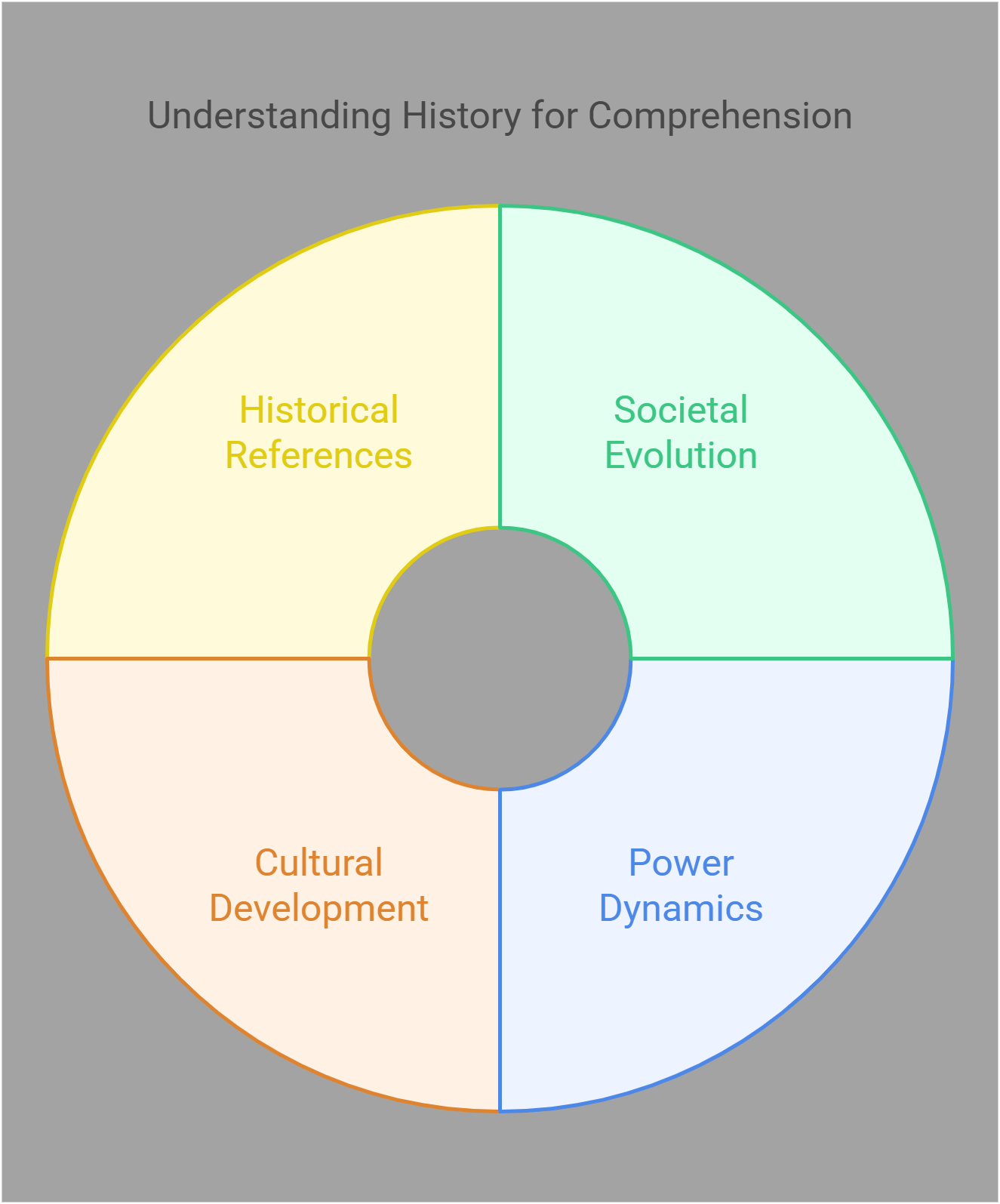
Overview
In this guide, we’ll explore these key history-related concepts:
- Colonialism and Its Impact
- Industrial Revolution
- Globalization
- Renaissance Philosophy
- Post-Cold War Geopolitics
- Enlightenment Era
- World Wars
- Ancient Civilizations
- Feudalism
- Nationalism
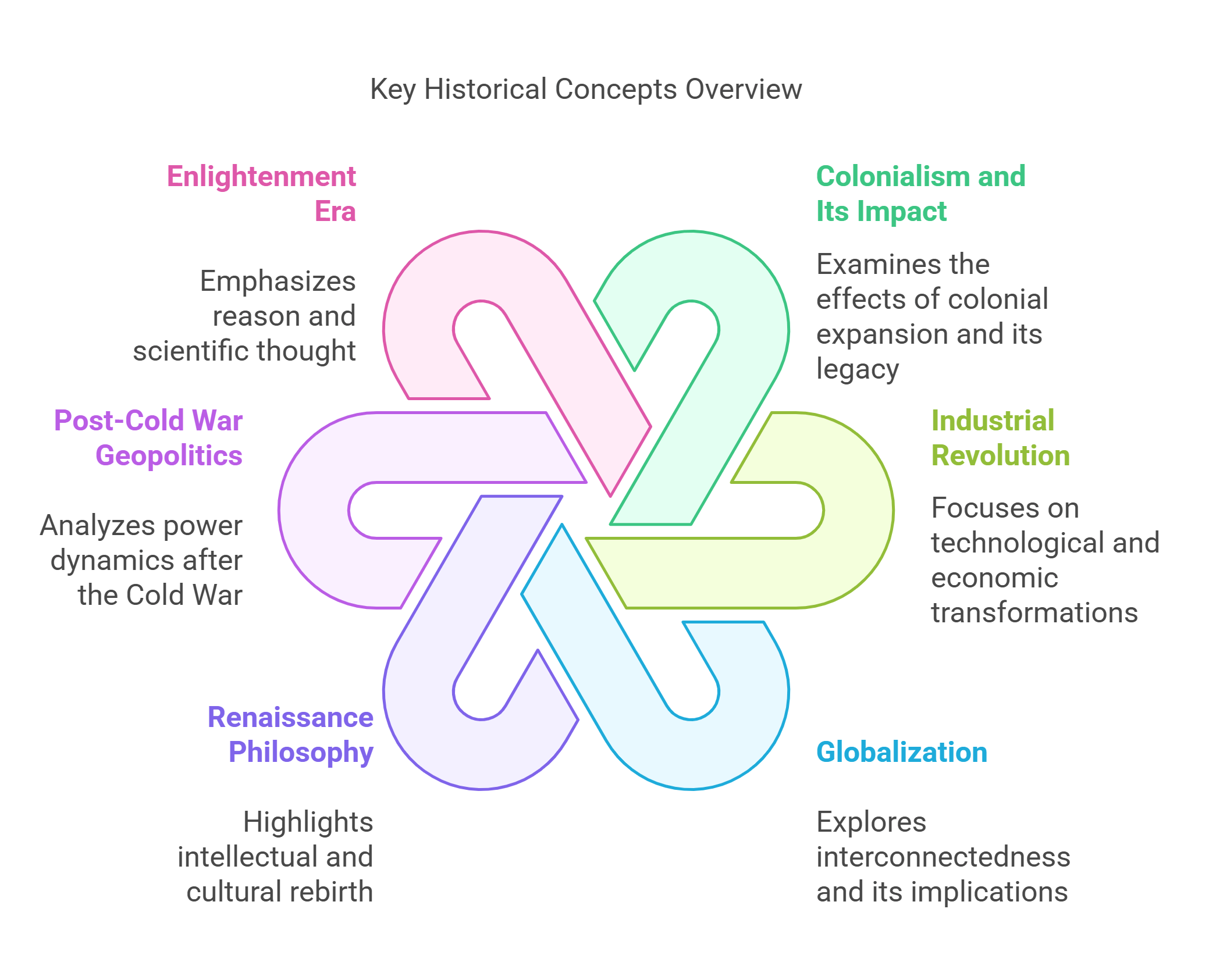
Detailed Explanations
1. Colonialism and Its Impact
Colonialism refers to the practice of acquiring political control over another country, exploiting it economically, and often imposing cultural dominance. Historically, European colonial powers reshaped global trade, governance, and cultural landscapes.
- Political and economic domination.
- Resource exploitation and trade networks.
- Cultural assimilation and resistance.
- Long-term socio-political consequences.
- Foundation for modern geopolitics.
How Would You Explain This to a 10-Year-Old?
Imagine if someone came into your house, took your favorite toys, and made you play their way. That’s like colonialism, where big countries took control of smaller ones and made them follow new rules, often not so fair.
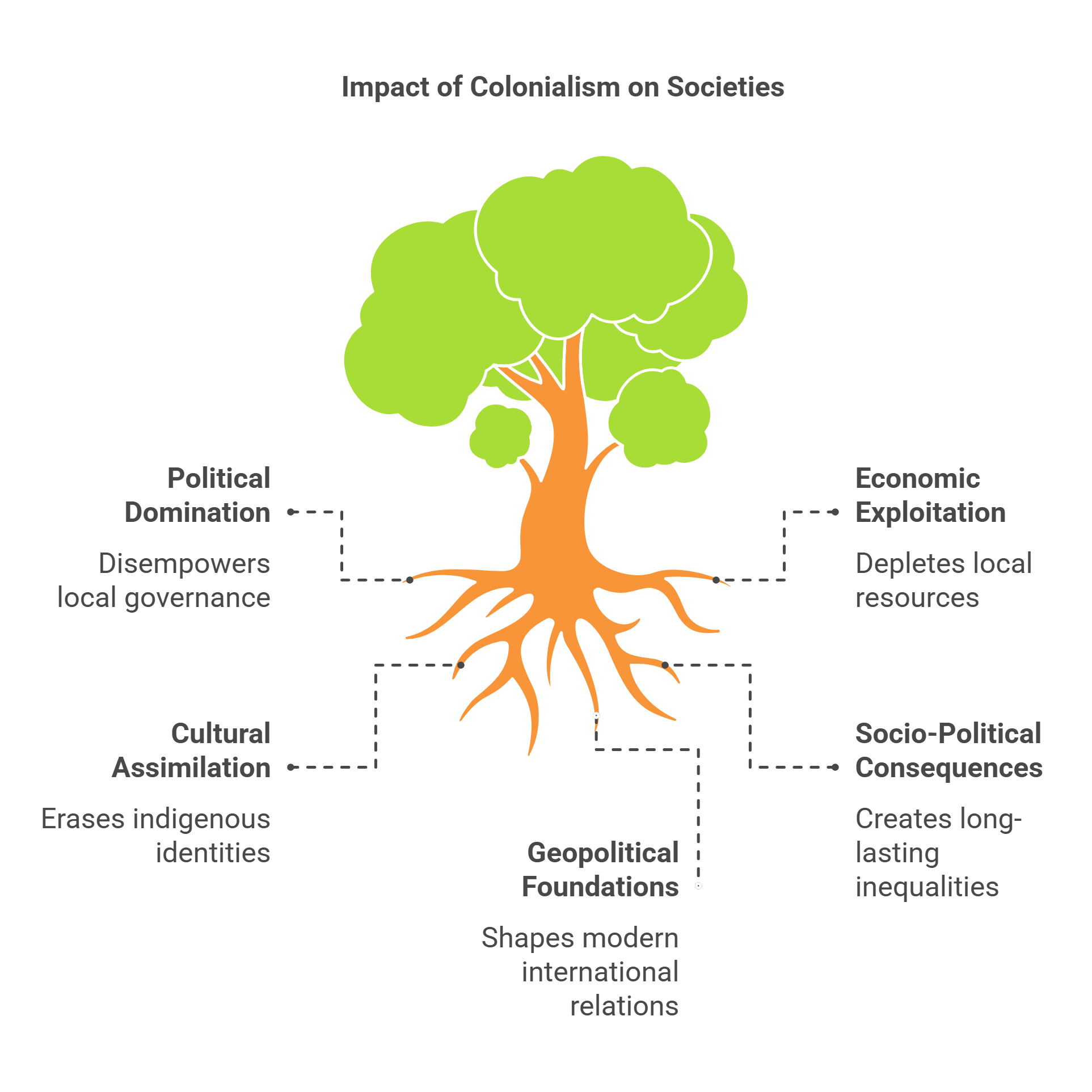
2. Industrial Revolution
The Industrial Revolution marked a shift from agrarian economies to industrialized production, beginning in the 18th century. It introduced technological innovations, urbanization, and new social classes, dramatically altering living standards and economic systems worldwide.
- Transition from manual to mechanized production.
- Growth of factories and urban centers.
- Innovations in transportation and communication.
- Rise of capitalism and new labor systems.
- Environmental and social challenges.
How Would You Explain This to a 10-Year-Old?
Think of it like everyone switching from making things by hand to using super cool machines that could make lots of stuff faster. But it also meant crowded cities and some tough jobs for workers.
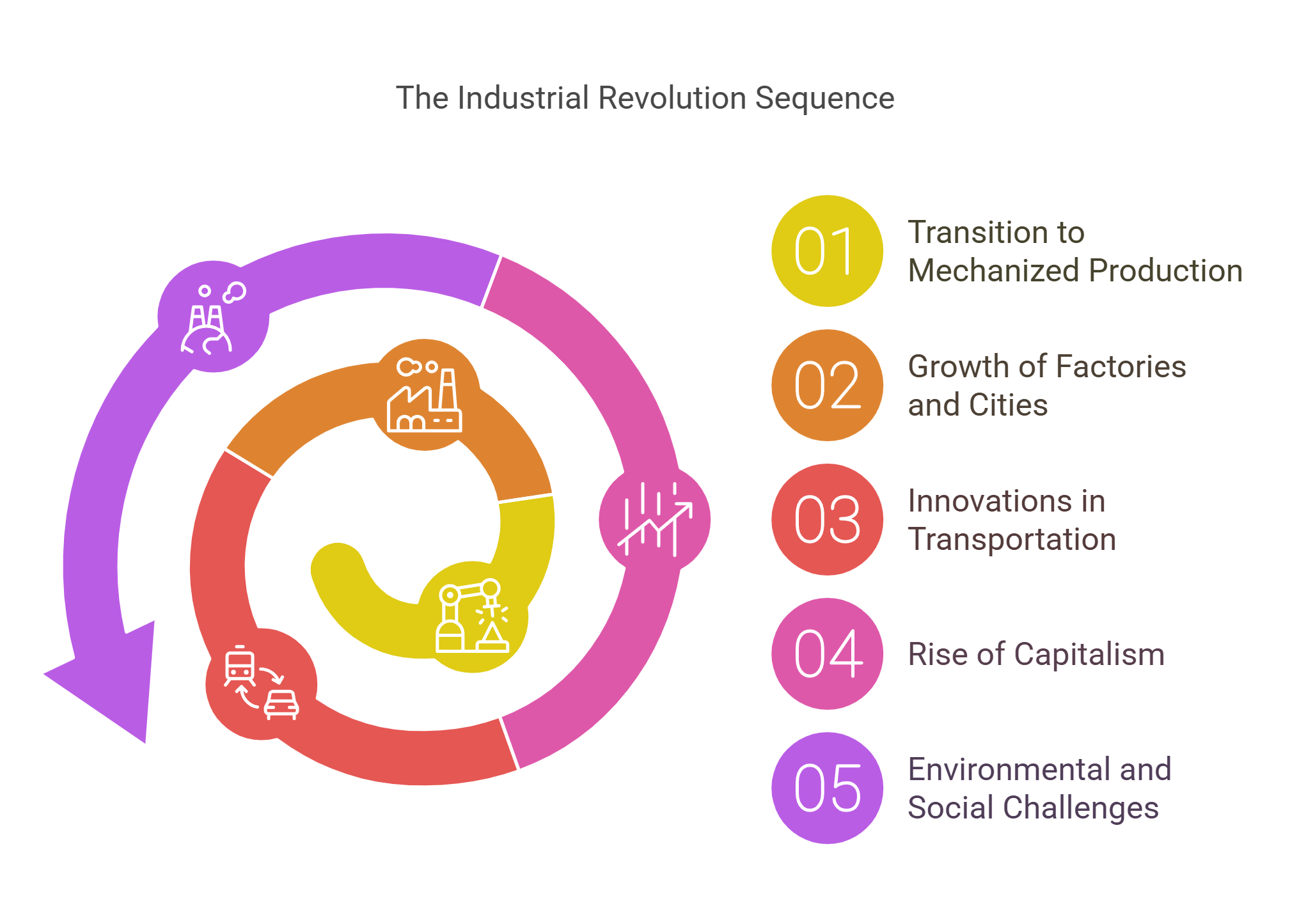
3. Globalization
Globalization refers to the increasing interconnectedness of the world through trade, communication, and cultural exchange. This process has roots in historical trade routes like the Silk Road but accelerated with modern technologies.
- Expansion of trade networks and global markets.
- Cultural exchanges and hybridization.
- Impact of technology on communication and economy.
- Benefits include economic growth and innovation.
- Challenges like inequality and cultural homogenization.
How Would You Explain This to a 10-Year-Old?
Think of it as everyone in the world becoming part of one big neighborhood where they can share toys (trade goods), stories (cultures), and phone calls (technology). But sometimes, some kids don’t get to share equally.
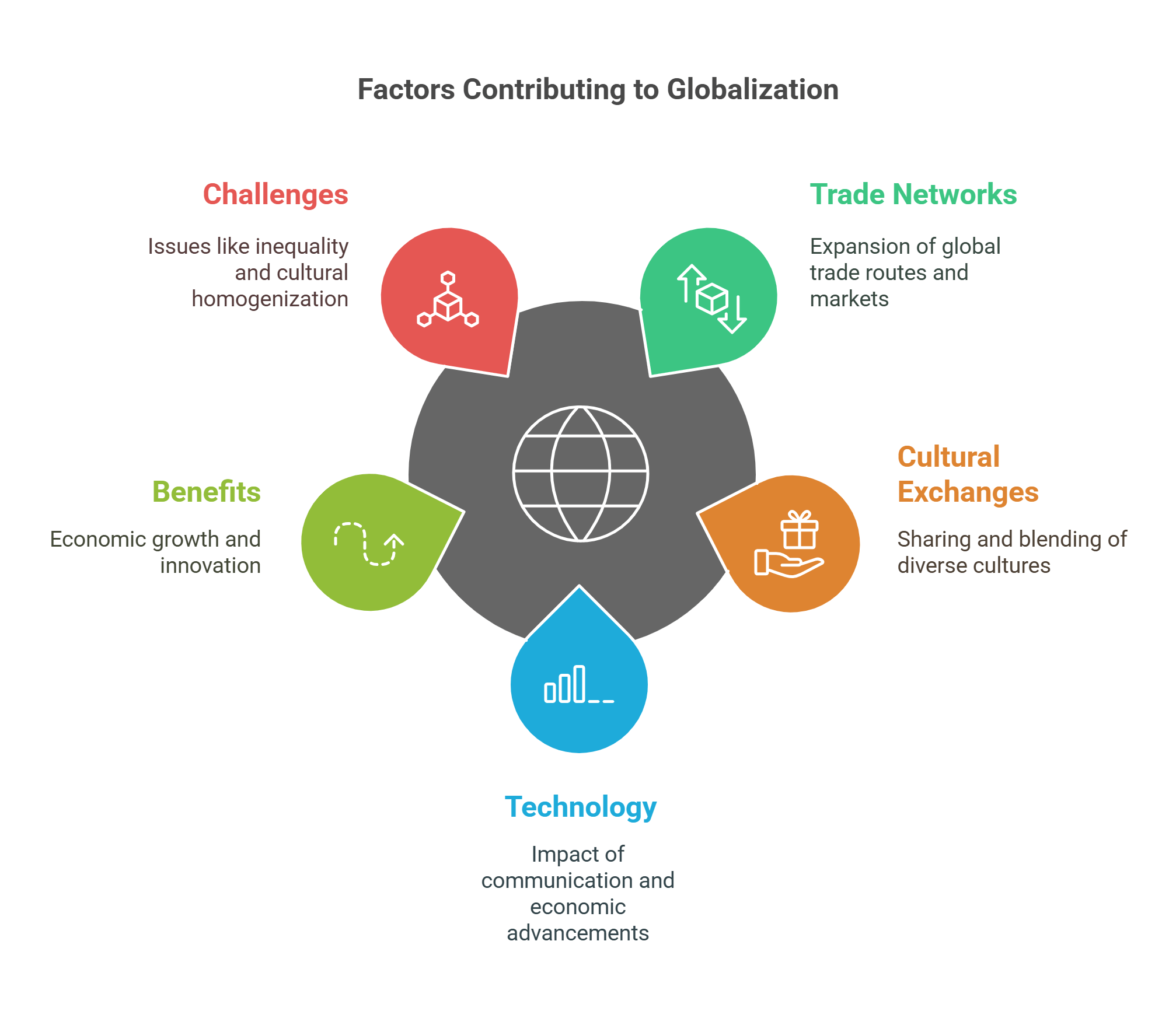
4. Renaissance Philosophy
The Renaissance (14th–17th centuries) marked a cultural rebirth in Europe, emphasizing humanism, art, science, and reason. Thinkers like Leonardo da Vinci and Galileo challenged traditional ideas, paving the way for modern science and individual rights.
- Revival of classical knowledge and art.
- Focus on human potential and achievements.
- Scientific inquiry over traditional beliefs.
- Rise of individualism and secularism.
- Influenced modern democratic and cultural ideals.
How Would You Explain This to a 10-Year-Old?
It’s like the world decided to take a fresh look at old ideas, like finding an old treasure box of knowledge and using it to paint cool pictures and invent new gadgets.
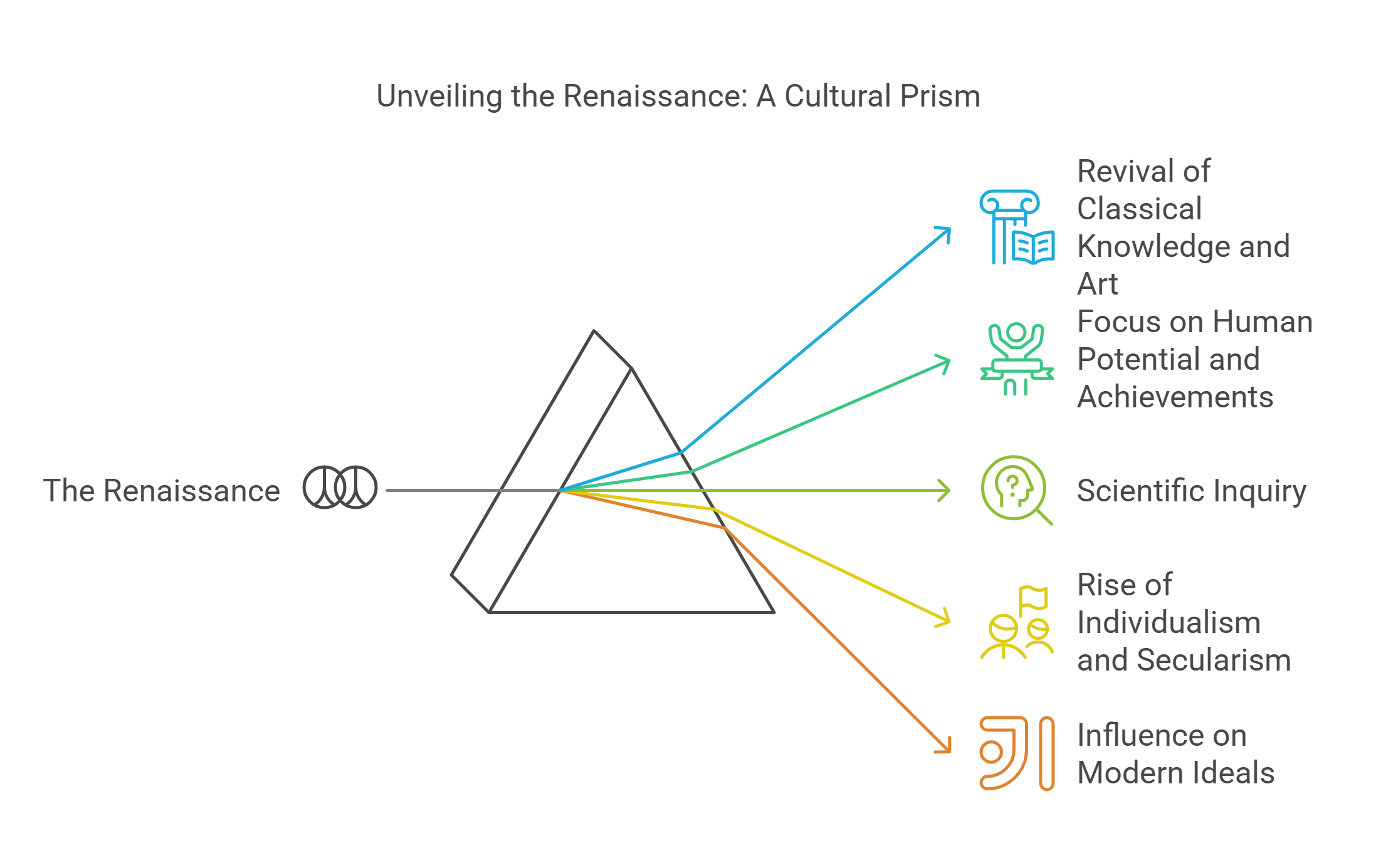
5. Post-Cold War Geopolitics
The Cold War (1947–1991) between the USA and USSR reshaped the world, ending with the Soviet Union’s collapse. Post-Cold War geopolitics involves a shift to globalization, regional conflicts, and the emergence of new power centers like China and the European Union.
- End of bipolar global power system.
- Rise of globalization and economic interdependence.
- Conflicts like regional wars and terrorism.
- New players in global leadership.
- Ongoing debates on global security and cooperation.
How Would You Explain This to a 10-Year-Old?
It’s like when two big kids stop fighting over the playground, but now lots of smaller kids are arguing over who gets to lead the games next.
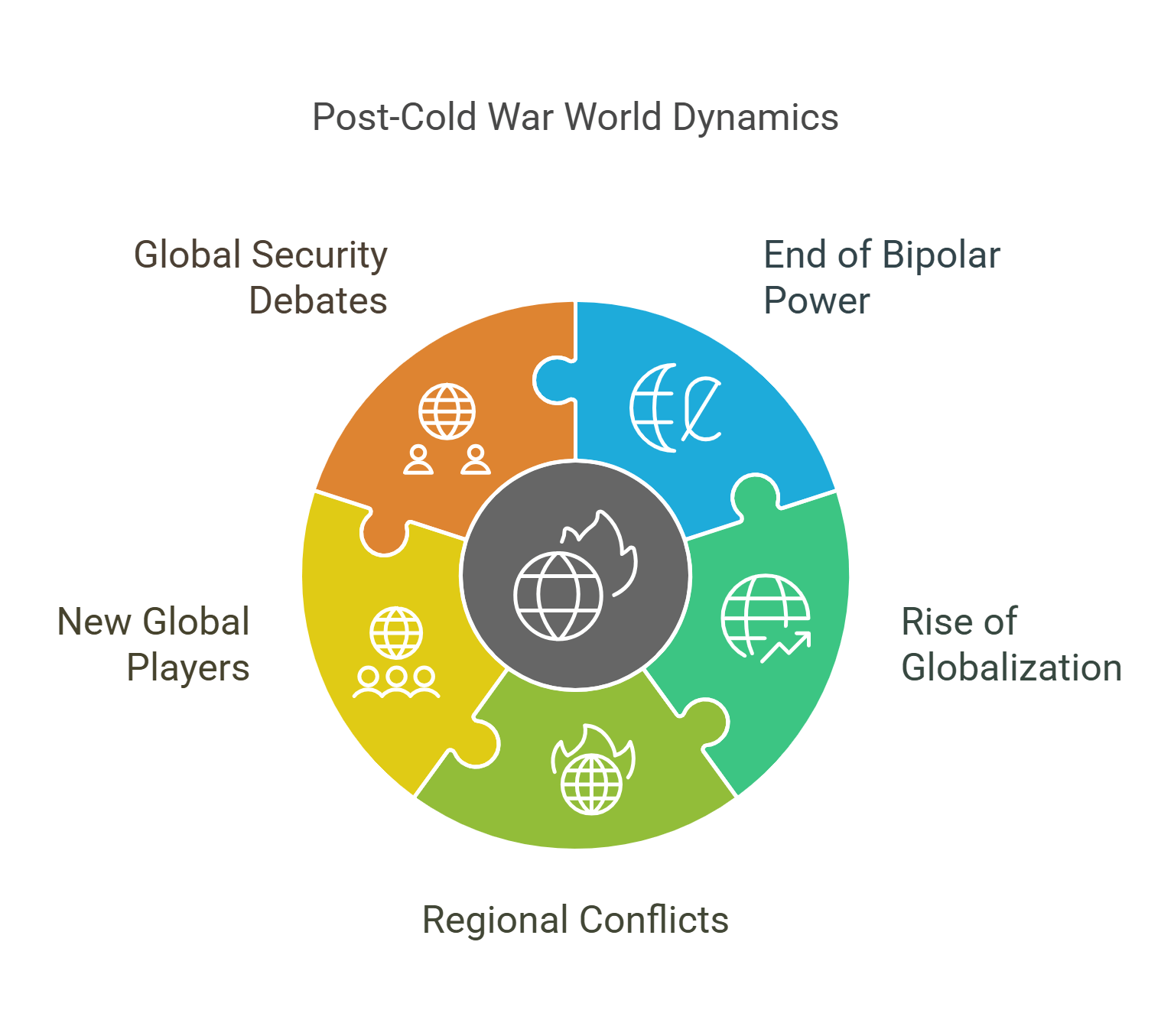
6. Enlightenment Era
The Enlightenment (17th–18th centuries) was a philosophical movement promoting reason, liberty, and progress. Thinkers like John Locke and Voltaire questioned traditions, influencing democratic revolutions and modern political systems.
- Emphasis on reason and critical thinking.
- Advocacy for individual freedoms and rights.
- Separation of church and state.
- Foundation for modern democracy.
- Influence on scientific and social advancements.
How Would You Explain This to a 10-Year-Old?
Imagine a group of smart people saying, “Let’s use our brains to make the world fairer and help everyone have a say in the rules.”
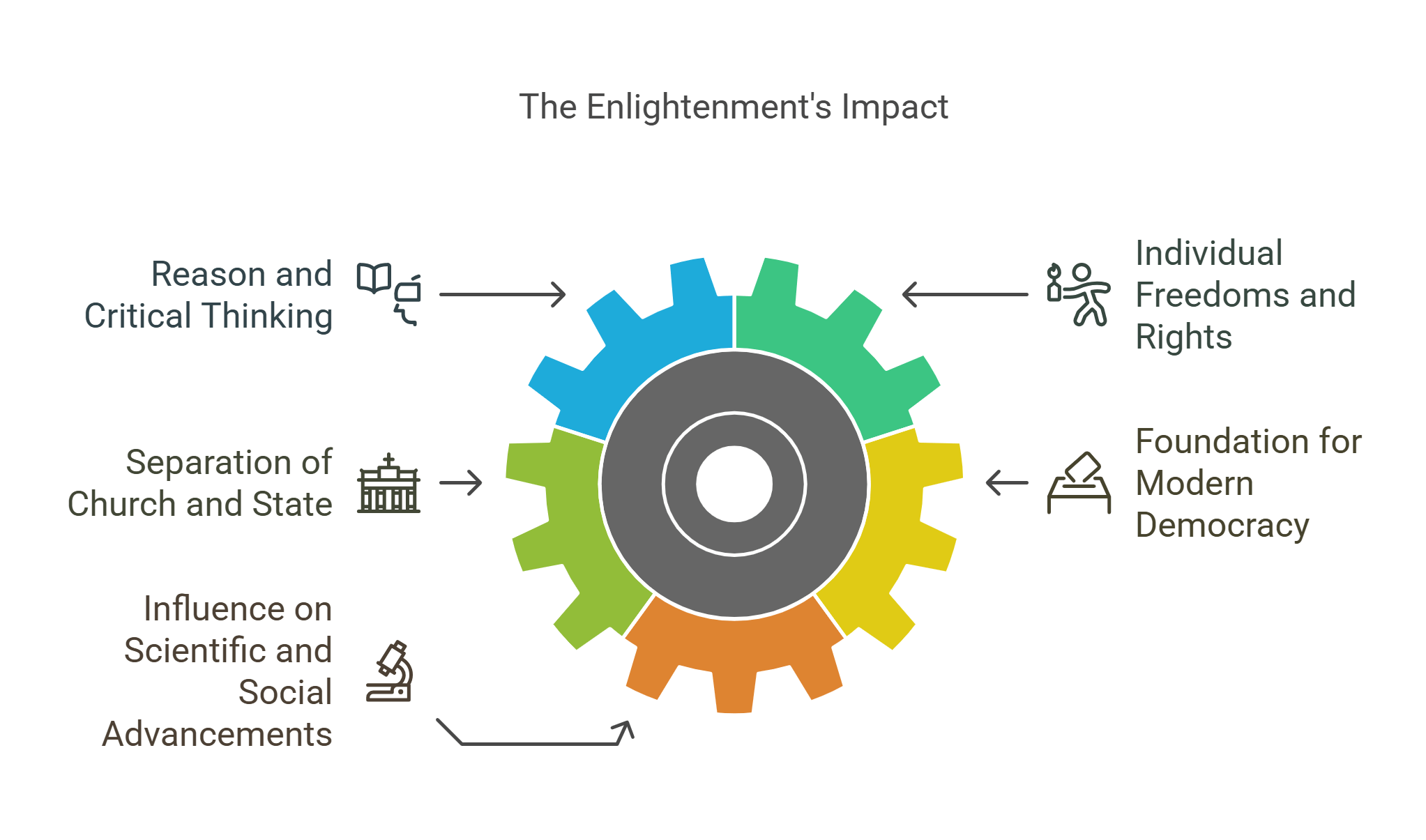
7. World Wars
The two World Wars (1914–1918 and 1939–1945) were global conflicts that reshaped nations and societies. They introduced devastating technologies, led to significant political changes, and paved the way for international organizations like the United Nations.
- Unprecedented global military conflicts.
- Innovations in warfare and technology.
- Political restructuring, like the fall of empires.
- Social impacts, including women’s roles in the workforce.
- Post-war focus on international peace and rebuilding.
How Would You Explain This to a 10-Year-Old?
Think of it as the world having two giant, tragic fights that taught everyone how important it is to work together and avoid such fights again.
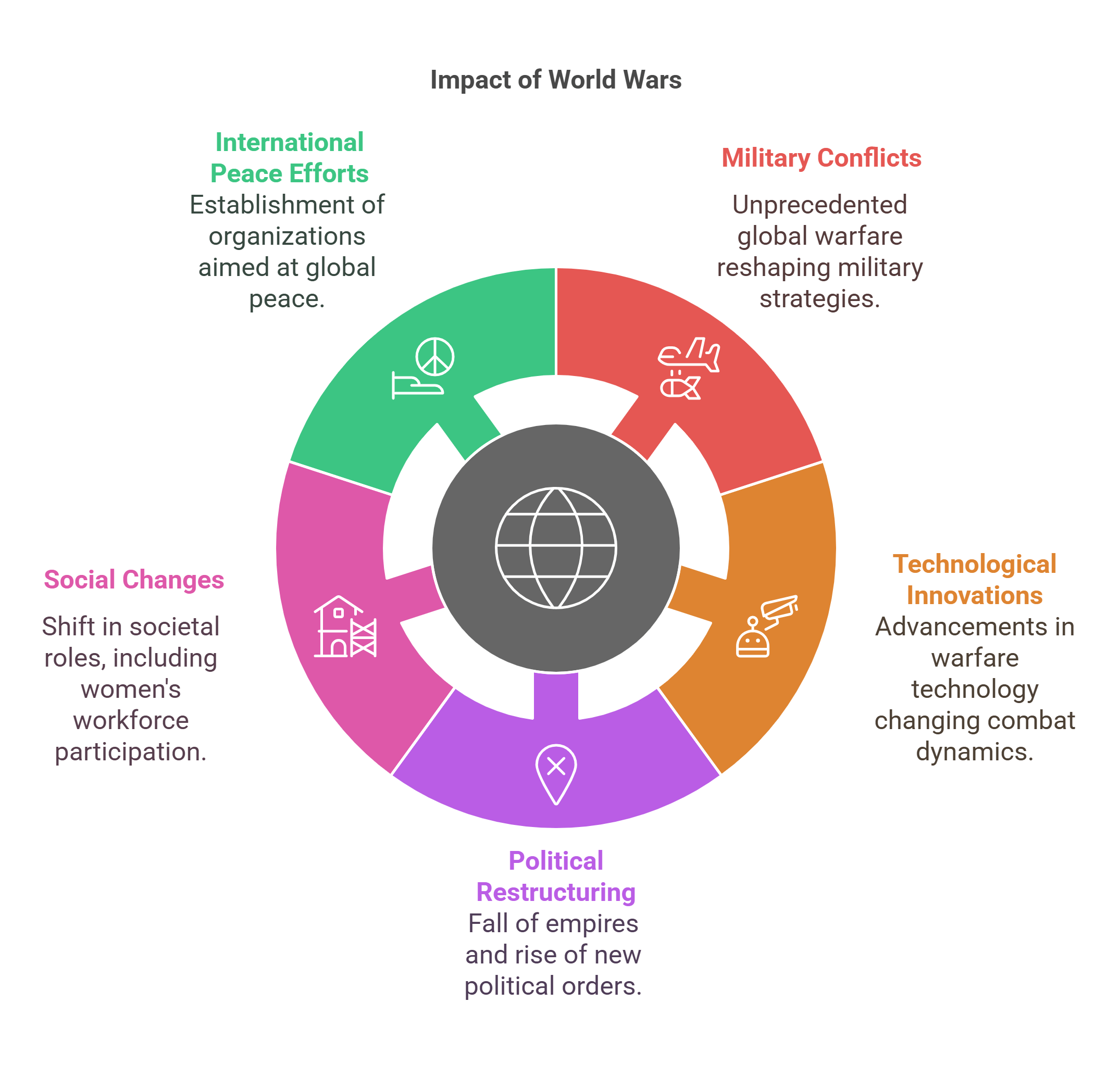
8. Ancient Civilizations
Ancient civilizations like Mesopotamia, Egypt, Greece, and Rome laid the groundwork for modern governance, culture, and technology. Their innovations, from written language to architectural wonders, continue to influence today’s world.
- Development of writing, laws, and cities.
- Advances in science, art, and philosophy.
- Foundations for governance and legal systems.
- Cultural legacies like literature and mythology.
- Key contributions to human progress.
How Would You Explain This to a 10-Year-Old?
Imagine the first groups of people coming together to build cool cities, invent writing, and create stories that we still hear about today.
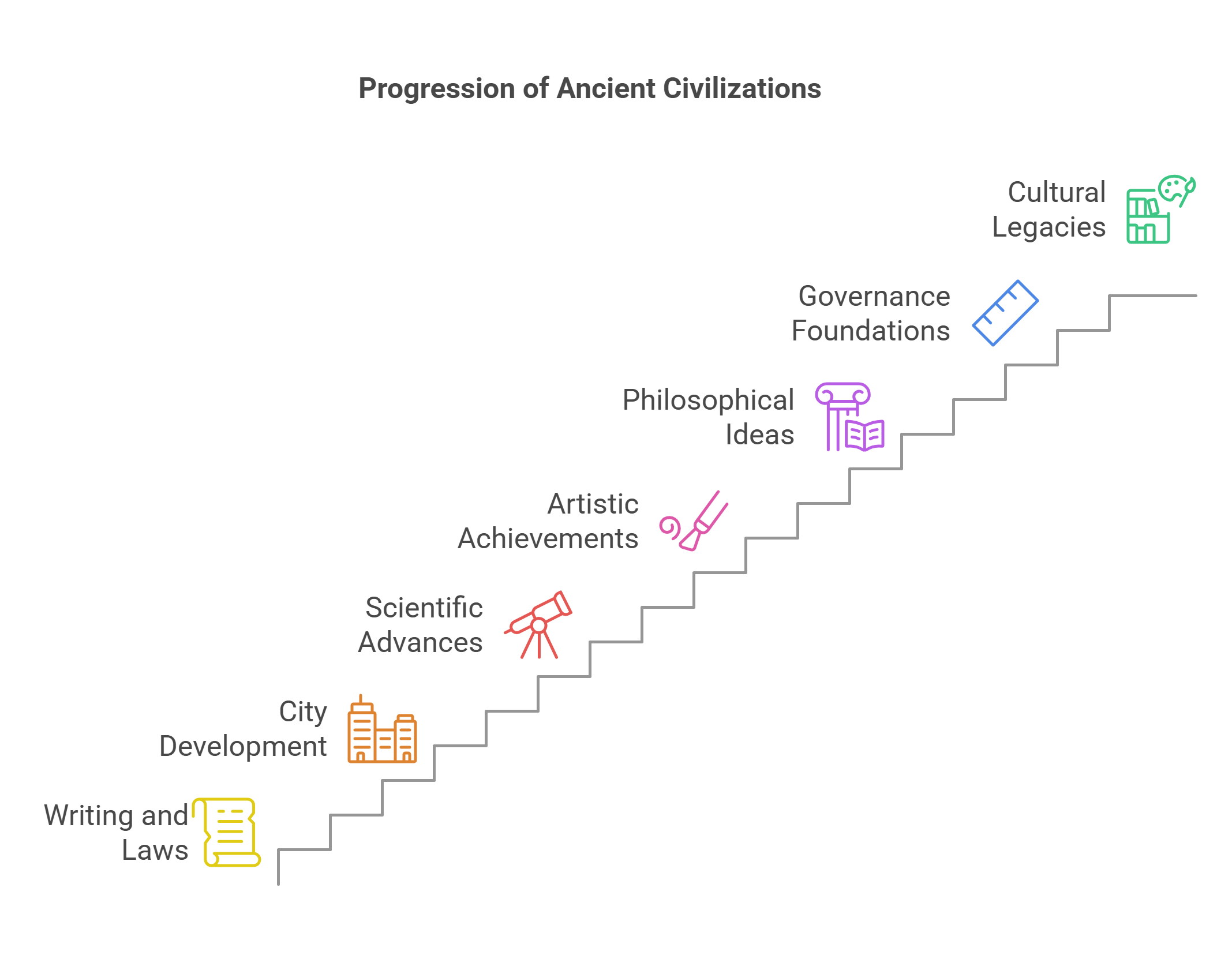
9. Feudalism
Feudalism was a social and economic system in medieval Europe where kings, nobles, and peasants had interdependent roles. Landowners provided protection and land to peasants, who, in return, worked the land and produced food.
- Hierarchical social system based on land ownership.
- Nobles controlled land and provided protection.
- Peasants worked the land for survival.
- Limited social mobility.
- Replaced over time by centralized governments.
How Would You Explain This to a 10-Year-Old?
Think of a school where the principal gives some teachers special jobs, and those teachers ask students to do all the hard work, but the students don’t get to choose.
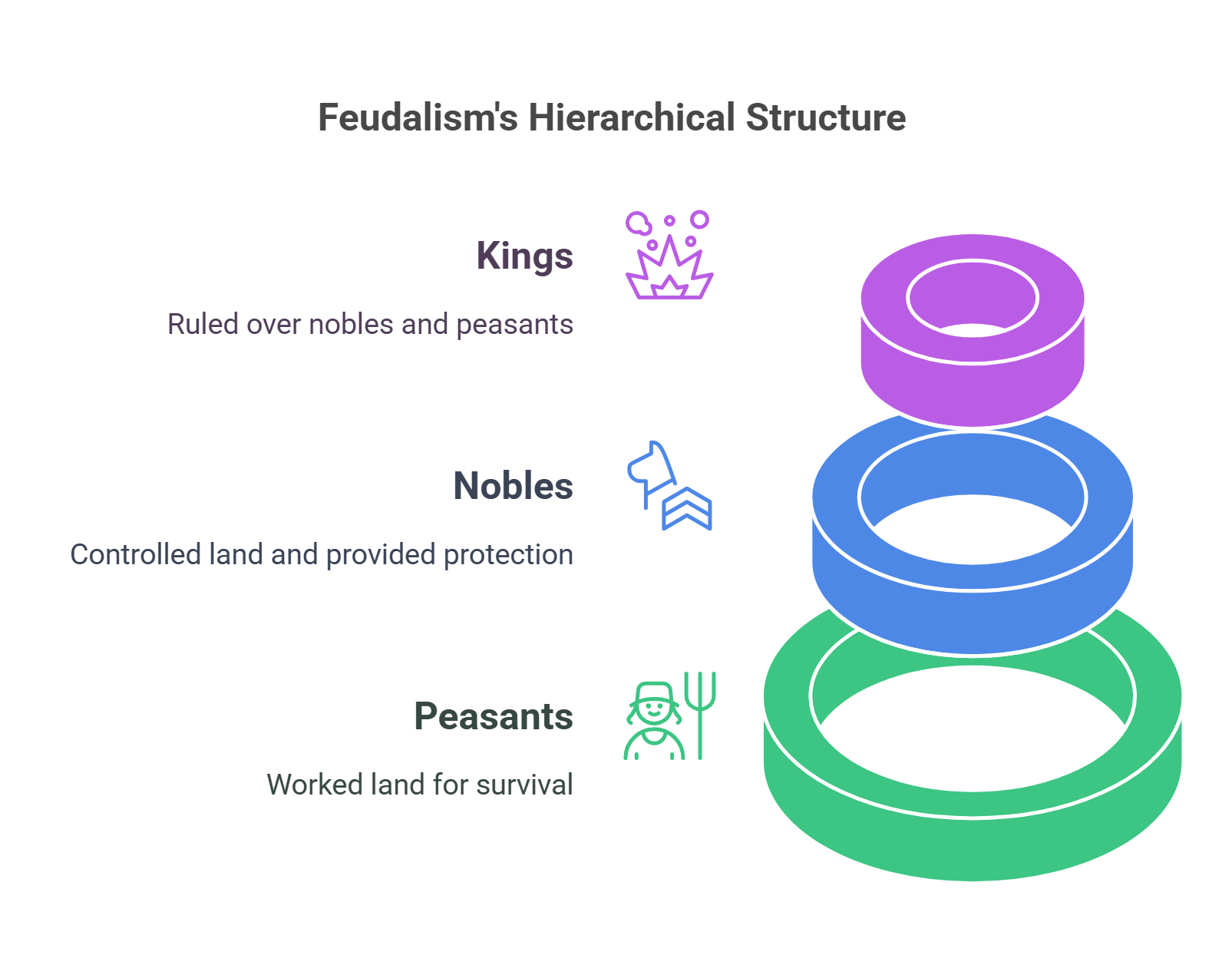
10. Nationalism
Nationalism is the belief in prioritizing and valuing one’s nation above others. It often inspires unity but can also lead to conflicts, especially when national interests clash or minorities are excluded.
- Promotes national identity and pride.
- Drives movements for independence and unity.
- Can foster innovation and competition.
- Risks include exclusion and conflict.
- Key factor in modern political history.
How Would You Explain This to a 10-Year-Old?
It’s like cheering super loudly for your favorite team, but sometimes forgetting that other teams are important too.
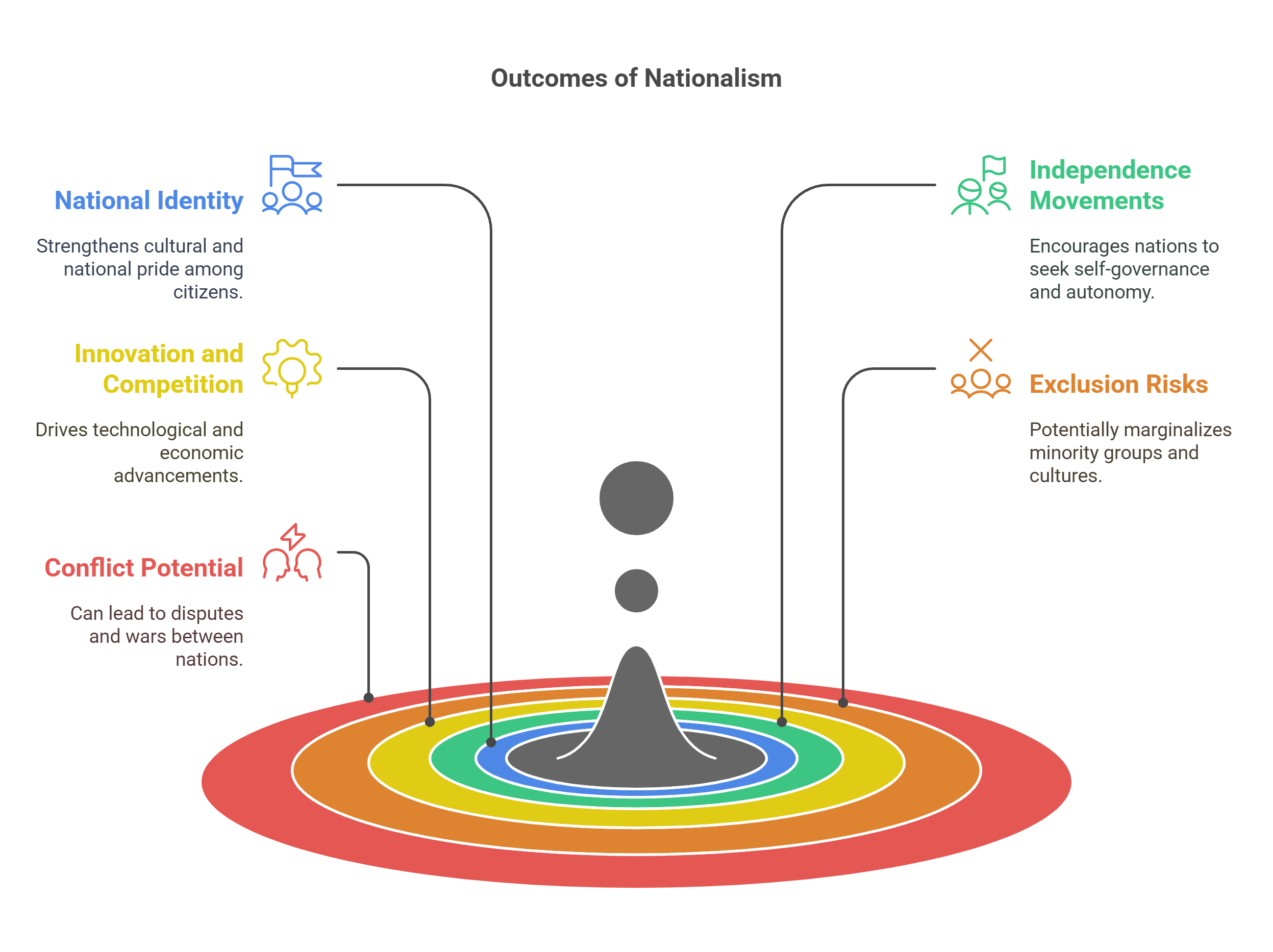
Conclusion
Mastering historical concepts enriches your ability to analyze reading comprehension passages, providing context for complex themes and arguments. Recognizing how historical events connect to current issues enhances not only test performance but also your understanding of the world.











